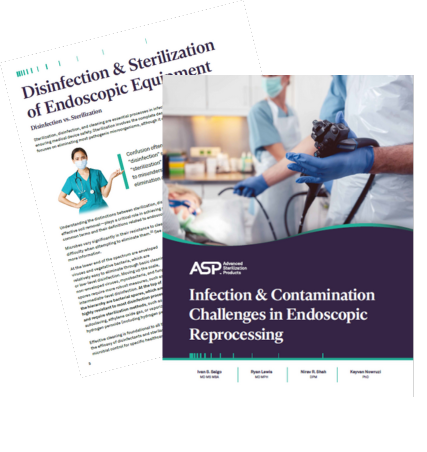Infection and Contamination Challenges in Endoscopic Reprocessing
Understanding the risks — and why it may be time to go beyond disinfection.
Endoscopes used in gastrointestinal and respiratory procedures are among the most complex reusable devices in healthcare. Their intricate design and high microbial burden make reliable reprocessing difficult, even when guidelines are strictly followed.
Recent studies cited in this whitepaper report contamination rates of 4.72% to over 16% in endoscopes that had undergone recommended high-level disinfection (HLD) protocols. This alarming data underscores a critical truth:
“The reprocessing of endoscopes is a complex and critical process that directly impacts patient safety.”
This comprehensive whitepaper explores the real-world challenges and risks associated with endoscopic reprocessing — including contamination, biofilm formation, and the limitations of HLD — and makes the case for a more robust, evidence-based approach.
Inside the whitepaper, you’ll discover:
Why the line between “semi-critical” and “critical” devices is increasingly blurred — and how this impacts infection risk
How complex scopes like duodenoscopes and bronchoscopes are linked to healthcare-associated infections, even when processed according to protocol
The science behind biofilm resistance, human error, and reprocessing variability
The significant margin of safety gap between HLD and sterilization
The impact of endoscope design flaws and maintenance issues
The environmental considerations of single-use versus reusable endoscopes
How hydrogen peroxide gas plasma (HPGP) and other low-temperature sterilization methods offer promising solutions
ASP’s Commitment: Introducing Ultra GI™
In response to these challenges, ASP offers Ultra GI™ Cycle— our advanced solution designed to help healthcare facilities achieve effective sterilization of gastrointestinal endoscopes. Ultra GI™ supports infection prevention efforts by providing an option that goes beyond HLD and helps reduce the risk of device-related transmission.
By combining insights from the latest research with ASP’s innovation in sterilization technologies, this whitepaper helps you evaluate whether your current reprocessing approach is enough — and what steps you can take to improve patient safety and compliance.
Download the full whitepaper to explore the evidence, real-world data, and expert recommendations on safer, more effective reprocessing strategies.

